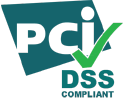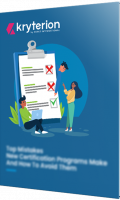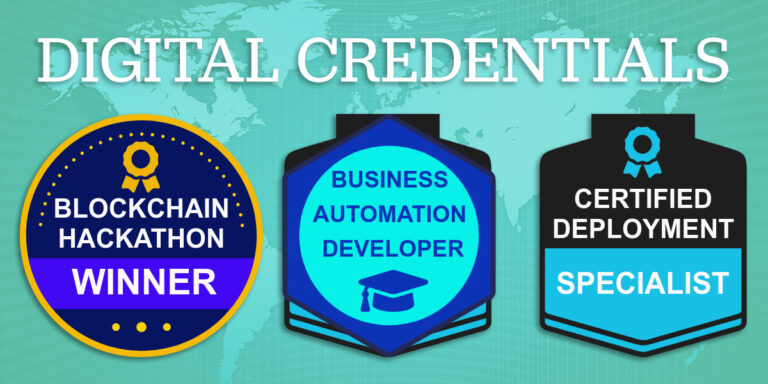Digital credentials in the form of badges and certificates give evidence of competency similar to traditional paper certifications and college degrees.
But what makes modern digital credentials superior to their traditional counterparts are the innovative technology features. For example, employers can verify digital credentials immediately at the click of a button. Blockchain security prevents them from being falsified.
The metadata inside a modern digital credential allows an employer to see who issued the credential, who received it, the testing date, expiration date, the specific knowledge tested, and much more.
According to a 2012 study completed by ADP, a leading software supplier to HR departments worldwide, most employers don’t verify traditional college degrees because of the time and expense involved. The study also reported that 21 percent of the 2.5 million resumes reviewed included fraudulent degrees; 78 percent of the resume were deemed misleading.
Digital credentials give employers greater confidence in their hiring decisions and accelerates the hiring process saving time and money.
What else about digital credentials?

Here are some useful nuggets on the advantages of digital credentials from Credly, a leader in digital credentialing and a Kryterion integrated-solutions provider.
The bullets below were excerpted from a Credly blog post entitled, Digital Credentials Are the Future of the Workforce.
● Digital credentials are a quick and secure way to verify a candidate’s knowledge, skills and abilities.
● Data shows that digital credentials in corporate training programs are effective for engaging and retaining employees.
● In contrast to training and promoting employees from within, hiring new employees from outside the company is expensive. On average, companies spend between six to nine months of an employee’s salary to successfully recruit and onboard a new team member.
● Digital credentials can be easily shared on social media, thereby raising the visibility of the test candidate and the credential issuer.
● Relying on a transcript or college degree is a dated and time-consuming process. On the other hand, verifying a digital credential can be done online, and the metadata will reveal all of the essential information about the credential.

● Many professional associations already have credentialing programs, and adding digital credentialing makes their credential more marketable, shareable, and visible.
● Employers moving to skills-based hiring are looking for clear evidence that job candidates have the skills demanded of a job role. The ease of verifying digital credentials facilitates this process.
● Digital credentials in a corporate training setting create a culture of recognition and allow managers to see the achievements of their most dedicated and engaged employees.
● Digital credentials recognize employee achievement and boost employee engagement by 48%, productivity by 34%, and employee retention by 26%, according to a report by the O.C. Tanner Institute.
● According to the Human Capital Benchmarking Report, the average time to fill an open position is 42 business days. For management positions in engineering, finance and marketing, the average is 68 business days. Digital credentials allow hiring managers to save time by being able to more quickly assess the competencies of their job candidates.
● The visibility of a digital credential on social media amplifies the success of the credential sponsor.
Take a look at your digital credentials to ensure that you’re providing candidates a full and rich experience that recognizes their skills and reflects well on your credentialing program.
The Kryterion Psychometrics Team works with dozens of clients across multiple industries. Have a question about your credentialing program in general or about digital credentials in particular? Contact us here for a free, no-obligation phone call with one of our friendly psychometricians. Talk soon!








